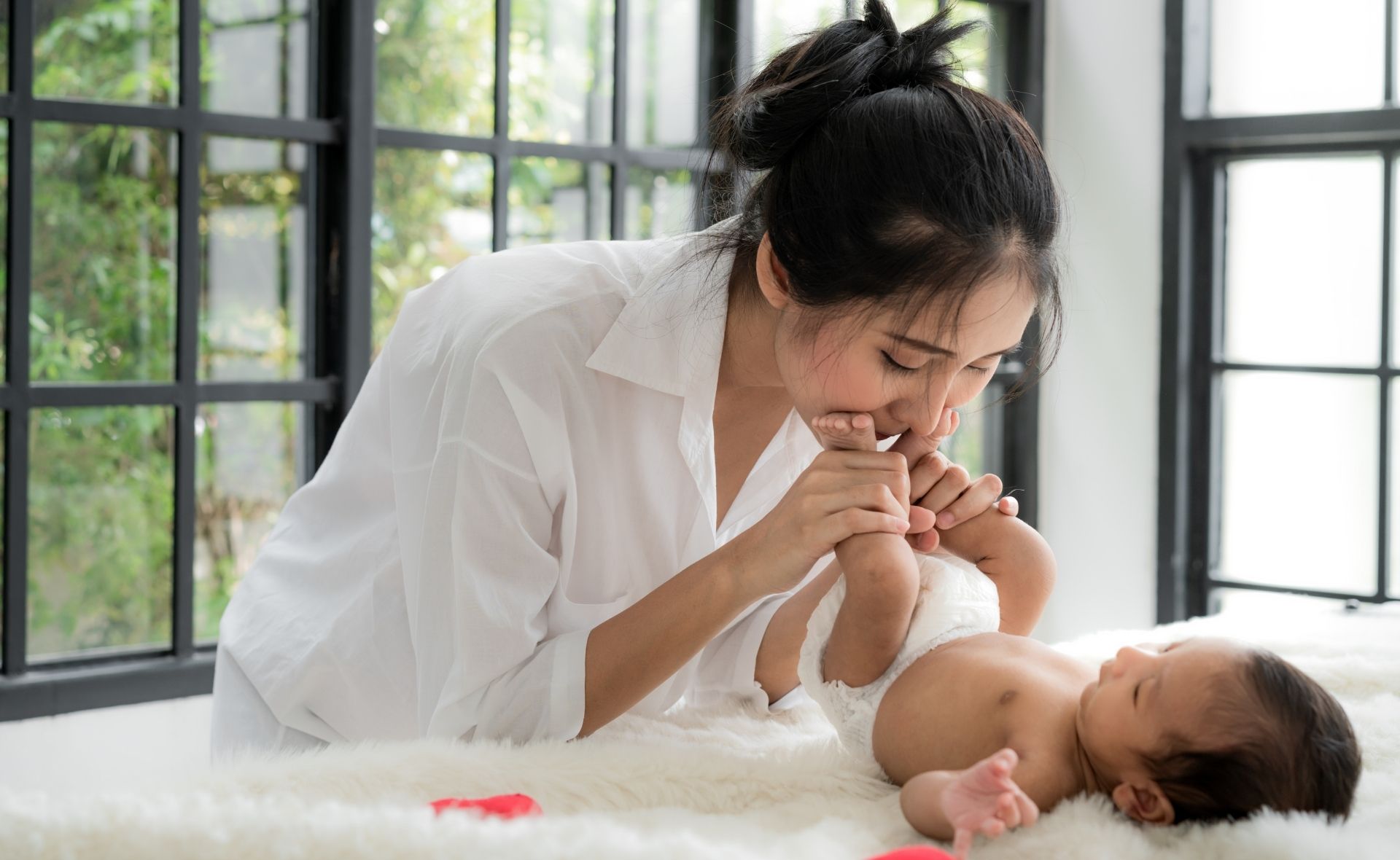Physical appearance, reflexes and newborn tests
Your baby’s appearance
Head: Your baby’s head, which makes up one-quarter of her total length may be swollen due to being squeezed through the birth canal. Often there will be fine down – maybe even a few millimetres of hair – on her head and body. Called lanugo, this grows on babies in utero, then disappears a few weeks after birth.
Eyes and ears: Your baby’s eyes at birth are about two-thirds the size of adult’s eyes, and her vision will be blurry but she can best see objects that are 20cm to 30cm in front of her – the perfect distance for bub to gaze into your eyes while you’re holding her.
A hearing test is usually performed before your newborn leaves hospital, or before reaching eight weeks of age.
The umbilical cord: At birth, a plastic clamp is applied to the umbilical cord, which is trimmed about two centimetres from your baby’s navel. A day or two later, the clamp is removed and the remaining section of cord becomes dry and dark, then falls off a few weeks later.
Weight: It’s normal for a baby to lose up to 10 per cent of her birth weight in the first week or so, when she passes meconium (her first bowel movement) and surplus fluid. She will soon put on weight once breastfeeding is established.

The wait is over and your newborn has arrived! (Image: Getty Images)
Reflexes
Babies are born with their fingers curled up into their hands, and if you place your finger on her palm she will clutch it, demonstrating the grasp reflex.
Her feet are flexible, strong and exhibit a walking reflex when she is held upright on a surface. Her toes also display the Babinski reflex, where her big toe curls upwards when the side of her foot is stroked and the Plantar reflex or ‘toe grasp’, where her toes curl under when the sides of her foot are slightly pressed.
Newborn tests
Your baby’s skin colour, heartbeat, reflexes, muscle tone and breathing are observed one minute and five minutes after birth, with each given a score of zero, one, or two. Known as the Apgar score, this tests helps doctors and midwives decide if any medical help or treatment is needed, either at the time of birth, or later on. Most babies score between seven and 10.
When your baby is around two days old, he’ll have the heel-prick test where four drops of blood are taken to be tested for certain conditions including cystic fibrosis, sickle cell disease , thyroid deficiency and other rare conditions.
Your baby’s weight, height, head circumference and temperature are also measured. They will also be given a full examination – their tummy will be pressed to check the organs, their hips and bottom will be checked, plus their heart, eyes and (in boys) testicles.



